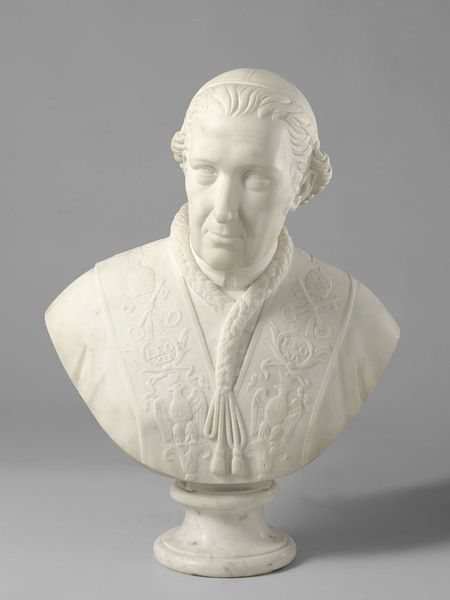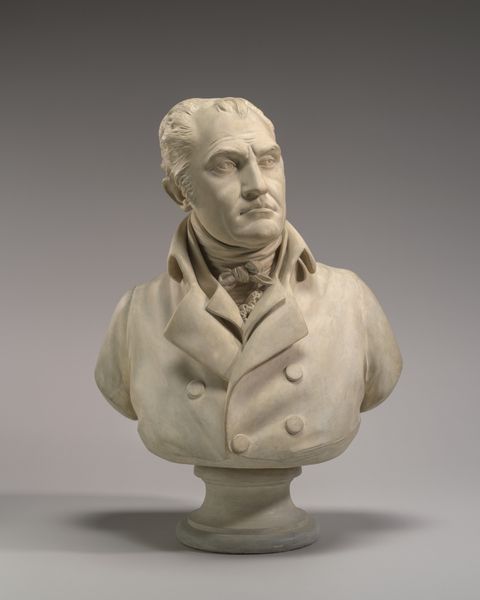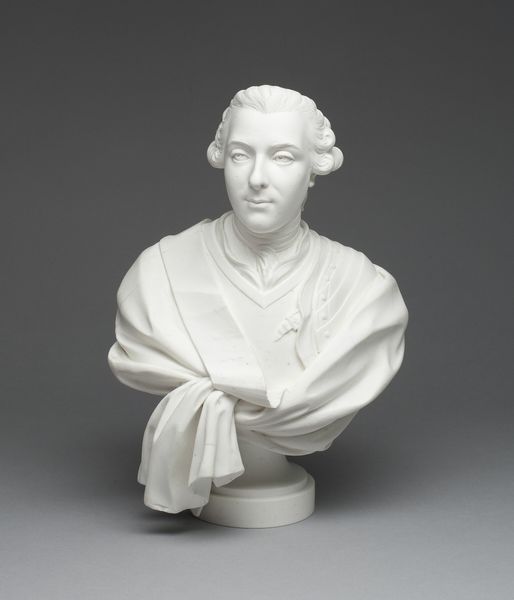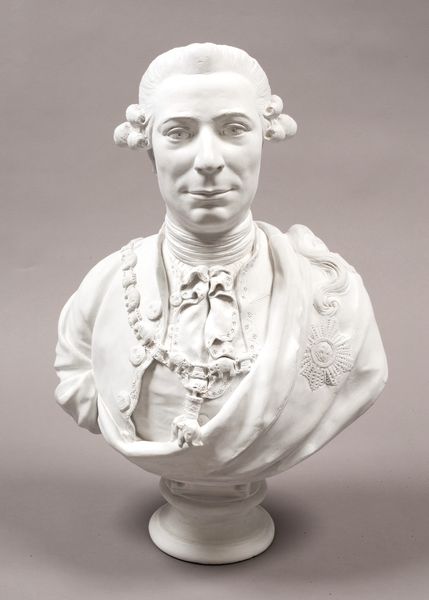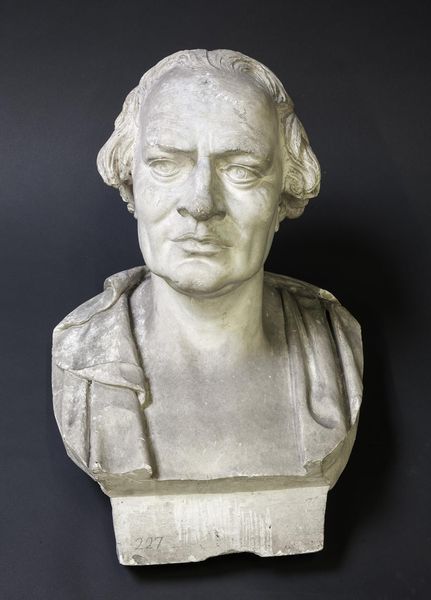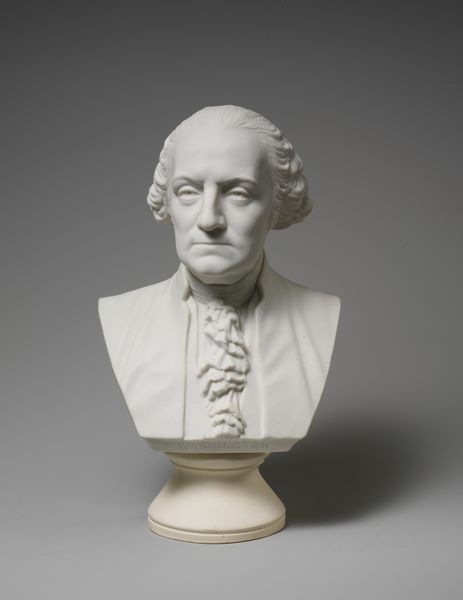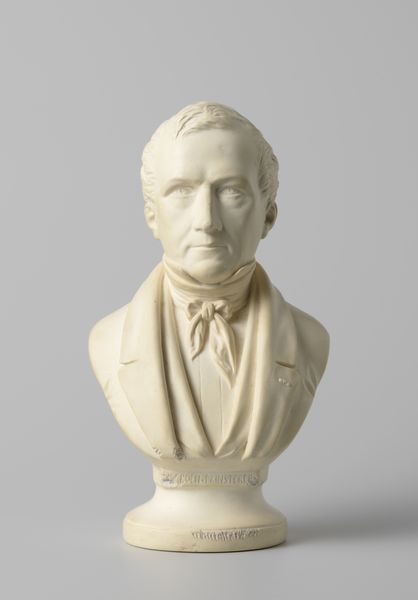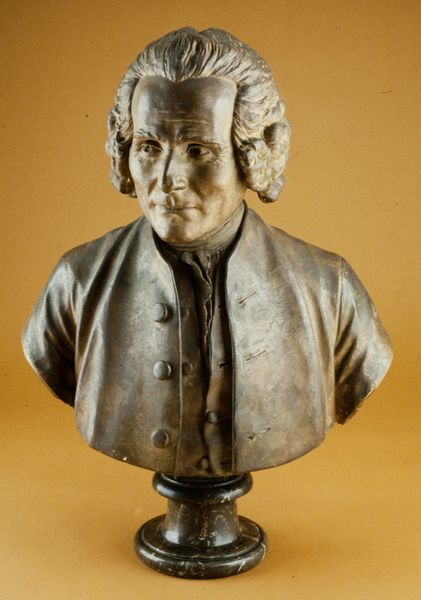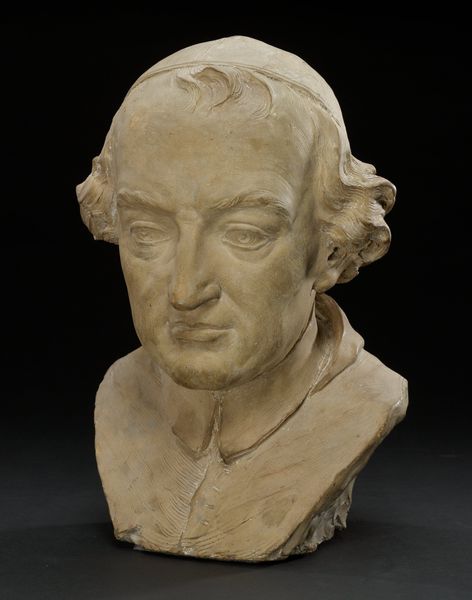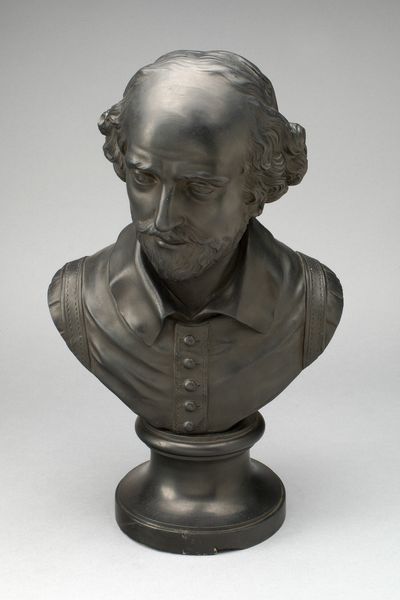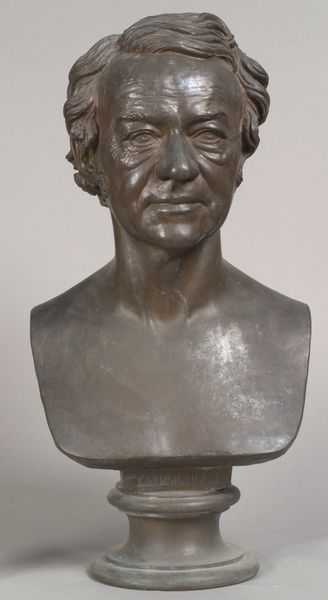
sculpture, marble
#
portrait
#
neoclacissism
#
portrait reference
#
sculpture
#
marble
Dimensions: height 62 cm, width 53 cm, depth 40 cm
Copyright: Rijks Museum: Open Domain
Adamo Tadolini carved this marble bust of Antonio Canova, likely during Canova's lifetime, capturing the sculptor’s likeness. Note Canova’s draped garment. It echoes the ancient Roman toga, a symbol of citizenship and civic virtue. This motif transcends time, appearing in countless portraits of esteemed figures throughout history, each time reaffirming their place in the continuum of greatness. The toga-like drapery in a portrait is more than just a fashion statement; it is a deliberate invocation of classical ideals, a nod to the virtues of wisdom, courage, and justice. Think of the emotional resonance such imagery carries. It is a testament to our deep-seated yearning for connection with a glorified past. Consider the Renaissance portraits, where artists like Raphael similarly cloaked their subjects in classical garb, imbuing them with an aura of timeless significance. This is no mere coincidence, but rather a manifestation of our collective desire to bridge the gap between eras, to find solace and inspiration in the echoes of history.
Comments
rijksmuseum about 2 years ago
⋮
This frail old man is Antonio Canova, the most celebrated sculptor in Europe around 1800, and a model for many of Rome’s young artists. Despite its lifelike appearance, the sculpture was made after Canova’s death, based on his death mask. Perhaps it was Adamo Tadolini who made the sculpture; he was one of Canova’s last assistants and may have indented this as a tribute to his former master.
Join the conversation
Join millions of artists and users on Artera today and experience the ultimate creative platform.

